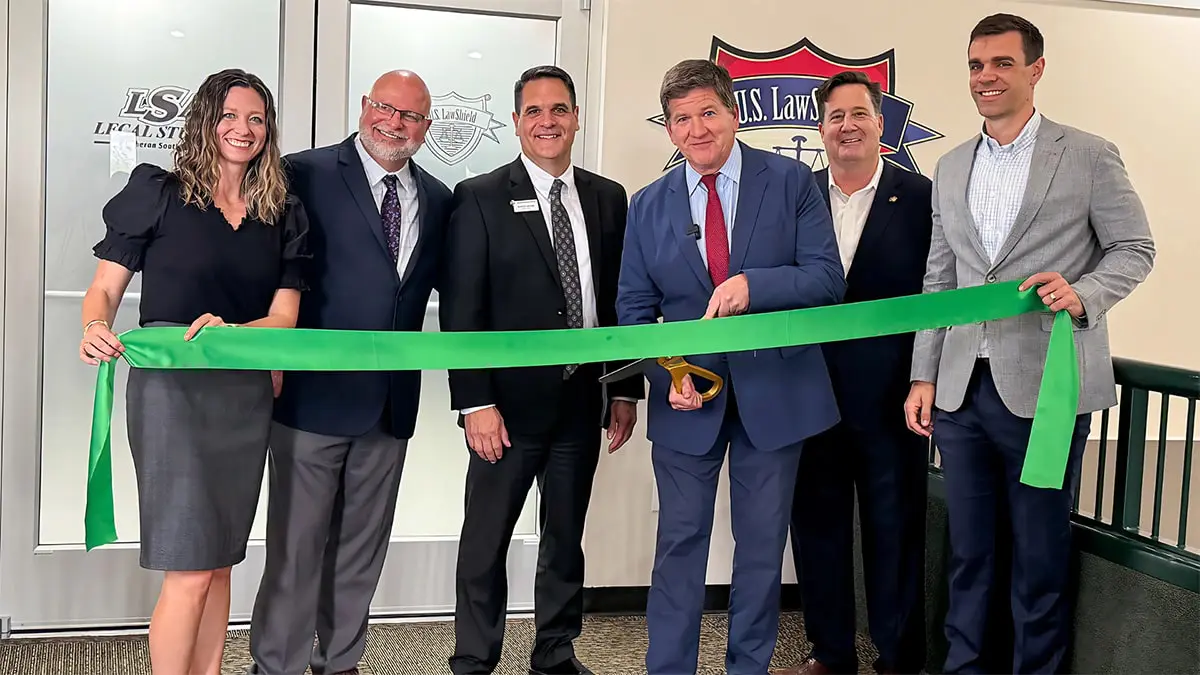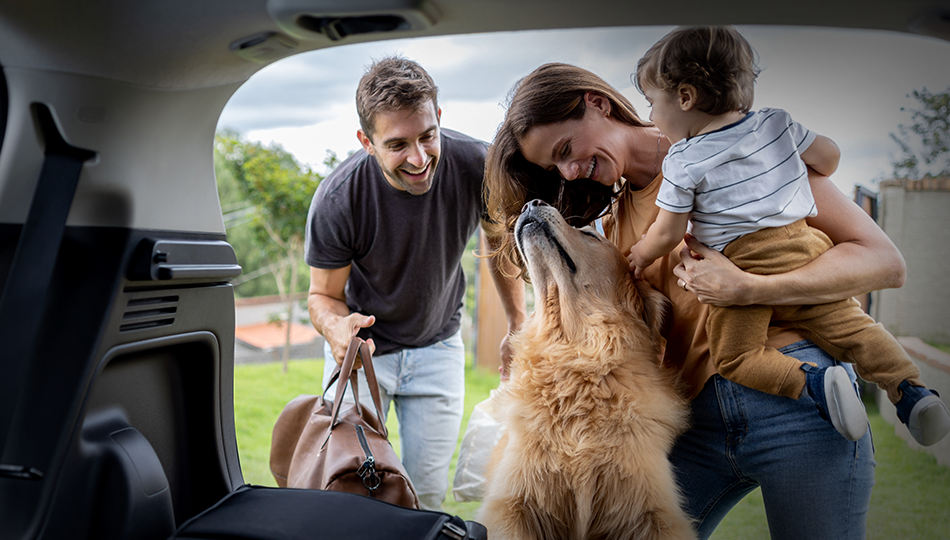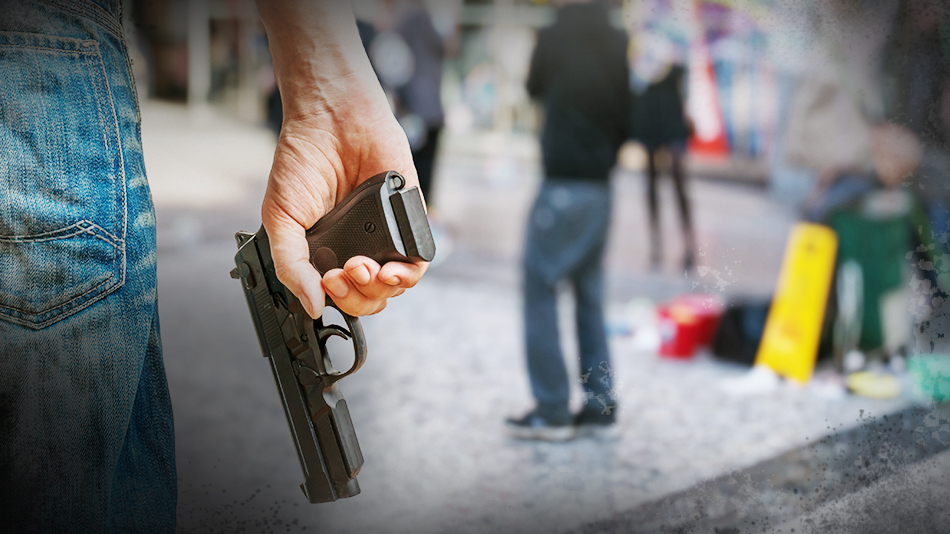The following is a video transcript.
You’re driving home after a nice dinner and you see those red, white, and blue lamps light up behind you. Your stomach drops as you look down to the dashboard. Was I speeding? Maybe he’s going to go around me. You slow down and pull over and the officer follows suit. You roll down your windows, turn on the interior car lights, place your hands on the steering wheel, and wait for the officer.
Unbeknownst to you, a pickup truck with the same color and model as yours was just used in an armed robbery in the parking lot of a nearby grocery store. The officer orders you out of the car, demands your ID, and immediately handcuffs you. He sees you have a license or permit to carry a concealed weapon and starts rifling through your truck, looking for your gun.
Even though the officer realizes you aren’t the robber, he finds the gun and accuses you of carrying it or transporting it illegally. He doesn’t like your attitude and puts you in the back of his car. Are you arrested? You weren’t given any Miranda warnings. What should you do? In a previous video, we discussed the Fourth Amendment to the United States Constitution, what a search warrant is and the most common exception to its requirement: consent.
In this video, we’ll cover how an officer can search your vehicle regardless of your feelings on the matter. The Fourth Amendment presumes that a police search without a warrant is unreasonable. To beat this presumption, there must be a compelling interest in police or public safety, the preservation of evidence, or both. We’ll cover exceptions to the warrant requirement most commonly encountered when driving a vehicle.
Automobile Exception
First up, the automobile exception. In Caroll v. United States, the Supreme Court held that an automobile is more difficult to secure and detain than a building or property when the police seek a search warrant. This rationale has expanded to allow warrantless searches of automobiles because there’s a lessened expectation of privacy in vehicles. The interior of the vehicle is open to plain view and cars are subject to government regulations.
There is also a lower expectation of privacy in a car and in its compartments, containers, and packages contained or transported inside. The law requires police have a reasonable suspicion that a violation of the law has occurred to instigate a traffic stop. Then, the police must establish probable cause that the car or its compartments and containers hold evidence of a crime for a legal warrantless search.
Arrest Exception
Now, let’s talk about the search incident to arrest exception. Courts have long held it reasonable for a police officer to search a person who is placed under arrest for weapons and evidence of a crime. The original rule made it reasonable to search an arrested person’s body and clothing but was later expanded to include any objects the person may have in their possession.
In Chimel v. California, the Supreme Court increased the search area to any place within the person’s immediate control at the time they’re arrested, because an arrested person could lunge or grab for a weapon or evidence lying nearby. This is known as the Wingspan Rule. Let’s visit how these two exceptions play out together during roadside stops.
In Belton v. New York, the Supreme Court ruled that if a driver was arrested for any reason, the driver and the car’s interior (including containers or bags) could be searched by police without a warrant. However, the police must still have probable cause that a crime has been committed or will be committed to search the trunk without a warrant. The Supreme Court expanded these rules to include when a person is outside of a car they just exited, their vehicle may be searched if it is reasonable to believe that it may contain evidence related to the offense for which they were arrested. However, the Supreme Court has limited this type of warrantless search in Arizona v. Gant, so that if a person is no longer able to access the inside of the car, or there is no probable cause to believe that it contains evidence of the offense, the police cannot proceed with a warrantless search. Finally, courts have long held that police may search an arrested person’s entire vehicle and trunk when it’s impounded. This is known as the Inventory Rule.
Returning to our roadside example, the officer had reasonable suspicion to stop you because of the similar truck involved in a robbery. It was also reasonable to order you out of your truck and detain you to make sure you weren’t the bad guy. Finally, most courts would likely find it reasonable for him to search your truck and seize your firearm if you were arrested for a weapons violation, thanks to the warrant exceptions we’ve just discussed. What if the officer was completely wrong about arresting you? You’d most likely avoid a conviction, but not without a free ride to jail and an introduction to the pains of getting your gun back from the police after your case is closed.
In the meantime, if you have any questions about the automobile exceptions or warrants in general call U.S. LawShield and ask to speak to your Independent Program Attorney today.





I agree with Robert. Further issue: If you have a valid ccw does it matter if the weapon is on your person or in the vehicle, under the seat or in the glove compartment for instance. The ccw authority does’t mean that you have to have it concealed on your person at all times. However, I could see an issue if, again for instance, it’s under the seat or in the glove compartment and a non-ccw holder could have access to it. Then I think, perhaps, you’d have some ‘splaying to do, along with a call to USLS.
If you have a concealed carry permit and the weapon is properly safeguarded in the vehicle there is no reason to assume on the officer part that you are in violation of any crime.
I believe that an officer operating in good faith, still makes a valid search and contraband can be used against the driver (drugs, illegal weapons). Meaning, the officer discovers after the search, you are not the suspect sought.
In Pennsylvania, an open carry State (although 90% of law enforcement aren’t aware of that fact) if you step off the sidewalk and enter your car, it is now required that you have a concealed carry permit.
Advice I’ve been given is to step out of the car, but locking it behind you. In my car that’s easy, you hit the lock button on the door as you step out. The officer may not even be aware you’ve locked it. Also step away from the vehicle if possible without agitating the officer. I don’t have anything to hide, but I don’t need the hassle of having anything confiscated.
If I Have a FL CW permit. isit sufficient to have my weapon in an unlocked center console or does it need to be in a locked glove compartment or in a holster in either?
Very interesting and informative. However, from what is stated here, it seems as if everything hinges upon being arrested. During the description of the stop, the narrator asks the question “have I been arrested” and states that the driver has not been read their Miranda rights.
So, in this situation, once the officer determines that the driver is not the person being sought for a crime, doesn’t that make the vehicle search allowances null? Or are we to assume that the officer cannot make that determination on the scene and must arrest the driver? If so, wouldn’t the Miranda need to be read to the driver immediately and prior to the search of the vehicle?
One last question; if a person is pulled over and the officer asks permission to search the vehicle, what does LawShield recommend a member do?
you need to be an attorney or have one with you at all times
If you carry a gun, you need to have an identical one at home in the safe. In the situation above, once you get home, you simy put the backup gun on and have a nice day. While you’re fighting to get your carry gun back, you put yet a third gun, exactly like the first two, on layaway or you buy it outright.
Then if you have this situation again, rinse, repeat, and have a nice day.
You must have the gun empty. The ammunition & gun need to be separate with one the trunk and the other in the glove.